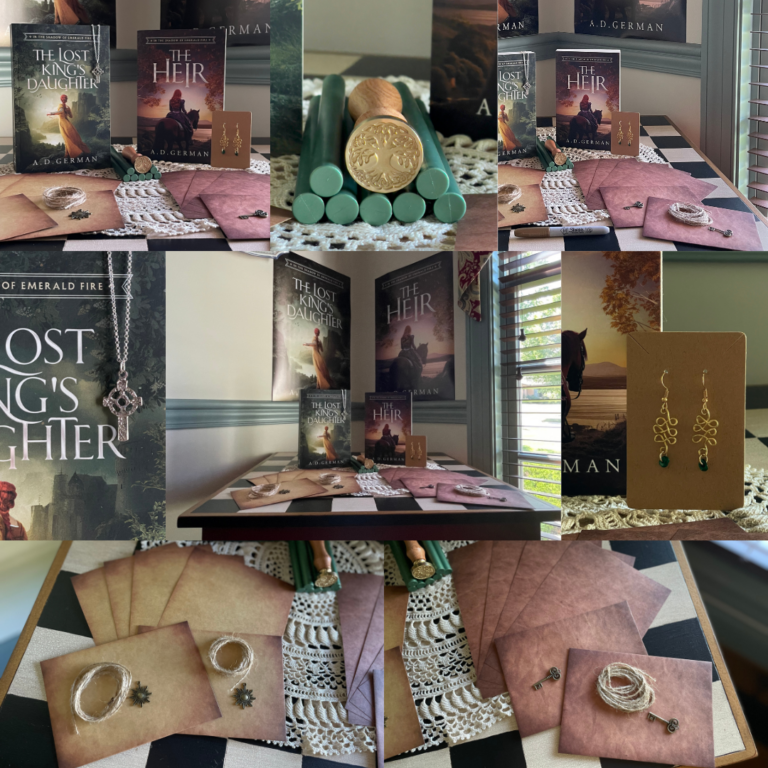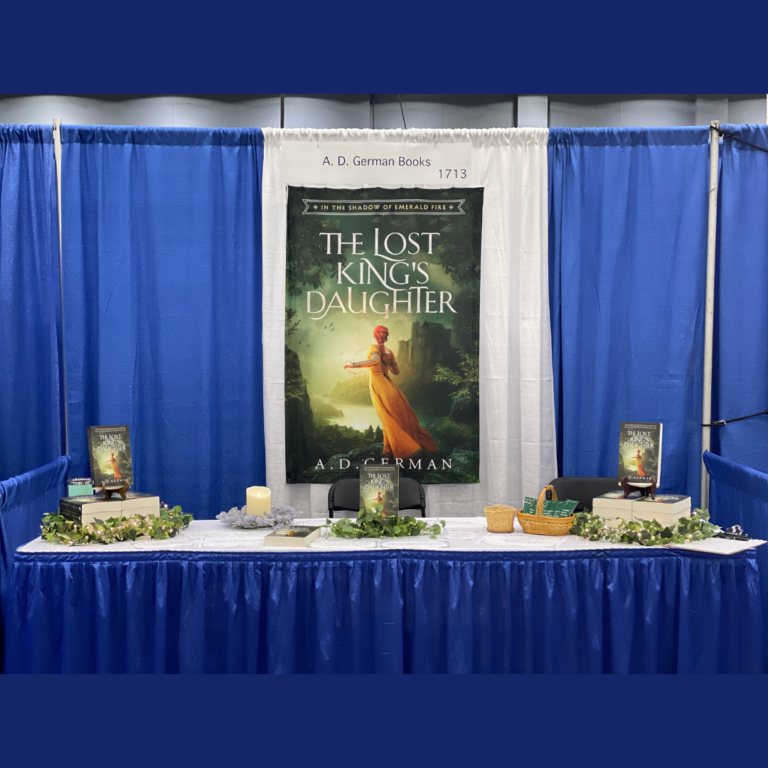Meet your characters Tip#7

Dear Storyteller,
Meet your characters is not only Tip#7 but is also a tip I’m super thrilled to share with you.
Most writing advice encompasses listing and planning out literally all the characters in a story, starting with the protagonist and the antagonist and then branching out from there in both directions to include all the minor characters involved on the sides of the hero and the villain. But is this the best advice? Perhaps not.
My suggestion…meet your characters; don’t create them.
This piece of advice may only need to be a subtle revamping of your thinking, but it is one that is well worth your effort when you find out why. Let’s jump into it.
Eliminate the stress of character creation…
First and foremost, I believe meeting your characters, not creating them, alleivates a TON of pressure.
I mean, think about it. Would you even want to start writing a story if you had to list every single character involved? And you had to know literally everything about them before they emerged on the page? One word comes to mind for me in respect to this technique: exhausting.
Perhaps that’s also the introverted side of me surfacing. I’m not sure, but I do know that if I was told I had to create a cast of characters and list all their characteristics, from eye and hair color to the way they dress, their mannerisms, etc before I sat down and wrote my story…yea, I would never write it. For me, that’s too many people on one page. I need-and like-my space. Let’s just meet one person at a time.
Think like a reader…
How are you introduced to characters when you read a story?
Or consider this point….when you think about reading a story, you’re not getting a run-down of who each character is before you even experience how the story unfolds, right? So why would you plan out your story that way? Why know every single character who’s in your story from the get-go? Because if I’m honest, how do you know who you’ll meet as your story unfolds?
Okay, that sounds weird because, after all, you are the author, and you should know who will be in your story… or should you?
Yet, in all seriousness, how can you truly know ahead of time every single character that’s going to be in your story? This just doesn’t make sense to me. Why? Keep reading to find out.
Think of meeting your characters like anticipating the future…
Another way of thinking about character creation is this: do you know every single person you’ll ever meet in life, right now, in this moment?
I hope your answer was no. 🙂
Life slowly introduces you to people. Some of these people will be your best friend, your worst enemy, your mentor, your coworker, just an acquaintance, etc. But if you knew all these people, had all their names, had all their characteristics, all their physical descriptions, and basically knew absolutely everything about them before you ever met them, wouldn’t that be just a tad overwhelming?
Okay, that’s an understatment, and I’ll answer that rhetorical question for you. YES!
Side note:
If this is discouraging you, don’t let it. If you’re an individual who loves to plan, and not having all your characters in a row totally doesn’t work for your way of thinking, I’m all for whatever works best for you. It’s okay to stick to what you know or what’s already working.
This isn’t a place where I want you to feel discouraged. So, if you’re feeling down about this, please don’t be. My advice is always to be accepted with a grain of salt; I can’t reiterate that enough. It doesn’t mean I’m a better writer, or you are, because we all have our tips and tricks that work for us. I just want this to be a time to share. So, if something I’m doing really helps you see things a different way and you like that, then it’s a win-win all around. If not, hopefully I’ll have something better for you later.
Okay, let’s keep going…
Why do I promote this concept of Meeting your Characters?
This advice stems partially from my own natural inclination to “meet my characters” whenever I’m writing a story, and it also stems from my own personal dislike of seeing a book’s whole cast of characters in the front matter of a book (although, it is true that some of my most favorite books have the pronunciation guide for names in the front).
If the cast of characters is small, I think this is workable and doable. If the cast of characters is quite a few because you have a large book, I personally find it overwhelming. Hence, why I placed all my characters’ names and their pronunciations in the back matter section of my books.
Furthermore, my personal feeling is, I’m meeting all these characters with all these names, and I literally can’t put two and two together because I don’t know any of them; I haven’t met them yet. For me, this adds to the overwhelming nature of it all, and it rather spoils the story for me. I know everyone up front, every title, every role, etc., and yet I don’t have the pleasure of being introduced to them.
What’s not “meeting your characters” and “just creating” them like?
It’s really like walking into a glamorous ballroom party and hearing the host immediately name everyone in attendance who is either whirling about the room or chatting together, but then he tells you that “later” you’ll meet all 372 of these people-one at a time. But don’t worry, we’ll get them all in in a fairly tolerable fashion. Ug, again, I’m an introvert. This doesn’t work for me. I need my space. Already, I’m looking for the exit. And, honestly, my mind is spinning just thinking up that example.
But if I walked into the room and was gradually introduced to all the lovely people there as the night wore on…that I can handle. It’s one at a time, and I get to enjoy the process. (Though, to be honest, my introversion might still be keeping an eye out for the nearest exit for a recharge when needed).
That being said, for those who are true beginners like myself, I still hold to my personal encouragement of: meet your characters. I think it will carry you far in the long-run and help you create a cast of characters that are believable and relatable because you’re meeting them on the page much like you would meet them in real life.
Additional note
Most traditional advice on this subject also recommends not introducing all your characters in the first several pages. Maybe we could term this character dumping. This is the first sign that shows you’re an amateur, at least from what I’ve learned from Jerry B. Jenkins when I was curious what author tips and tricks he had to share.
It seems a no-brainer, but it’s still useful advice and further emphasizes my point that meeting our characters when writing is head-over-heels way more insightful than planning and creating characters who may never get into the story at all. Kinda a waste of time. Or if they change a lot, now you have to go back and redefine all your characters you’ve already written out. That doesn’t sound like fun to me. Personally, I’d rather save time and mental capacity and just meet them as I go.
So how do you meet your characters?
Exactly as it sounds. As your story progresses and characters enter the scene, introduce them to the reader.
Incorporate characters naturally. Don’t share all their physical descriptions up front.
Just as you built a foundation and added layers during your daydreaming (Tip#2) sequence when you initially began your story, start with your main character and then gradually add to the scene an additional character or two.
Let’s look at a couple of examples.
Poor example of meeting your characters
In this example, it’s an encouragement not to list the character’s qualities and characteristics all up front. Weave it in instead, as you’ll see in the example after this one.
But first, here’s the not-so-great example.
“Jane, you’ve come!”
Jane skipped up to me. She had long blond hair, bright blue eyes, pale, pale skin, long legs, and slender fingers, liked to laugh a lot-it sounded like a bell-, and she always loved to wear red shoes. She talked to me a lot. She was my best friend. We loved hanging out at boring social events.
James came then, followed by Winnie, Sophie, Mark, Louis, and Clarice.
How’d you feel reading that example?
Yea, it was a lot.
What to do instead?
Instead, introduce the new character slowly. You can use physical descriptors, but it’s more natural and inclusive to let them unfold rather than sharing everything at once. Use no more than probably 3 descriptors to introduce your character so it doesn’t become too overwhelming.
Good example of meeting your characters
“Jane, you’ve come!” I exclaimed.
“Of course,” Jane said, taking my arm, her bright blue eyes shining with mischief and intrigue. “I wouldn’t miss this party for anything.”
“Ah, I should well wish I were long gone from here,” I replied. “But as it is, so I must suffer the agony of a social engagement. I’m so glad you’re here. I wouldn’t make through this evening if you weren’t!”
Jane’s crystal clear laughter rang out from our little corner of the room. She quickly placed her long, slender fingers to her mouth to stifle her laugher and compose herself. A few guests looked in our direction to see who was the culprit of such a boisterous interruption, then they resumed their causerie.
I smiled. Jane was one of the best people I knew, and she was an even better friend.
“Ah, look, there he is!” I pointed to the main entrance.
Jane turned her head toward the door, her beautiful, long blond curls bouncing joyfully with the sudden movement.
It struck me then that Jane’s curls matched her cheerful personality.
“Why it’s James! It’s about time he showed up!” she said.
I could keep going on this example, but I’ll stop here…
Did these examples help?
The above examples were something straight off the top of my head, but I hope it helps you to see the difference between info dumping on the reader about your character, as opposed to gradually introducing information about them.
And maybe as you’re writing about Jane, you discover that initially you wanted her to have brown hair, yet as your story progresses and Jane interacts with you, you realize Jane is someone who exudes cheerfulness and a sunny disposition, which elicits more of a blond-haired person in your mind. (Sorry to be stereotypical here).
In truth, this all depends on you and what you see in your mind’s eye. For me, in my In the Shadow of Emerald Fire series, my cheerful, sunny-dispostioned character had dark hair; it was Murron. And the sullen, sour-dispositioned individual had blond; it was Annwn.
Do I have to do all this?
Again, definitely you do not. As aforementioned, you don’t have to meet your characters at all. You can list them and brainstorm their characteristics, physical descriptors, etc. all before your put pen to paper or words on the screen. This is, of course, only a suggestion. It is also rather a time saver. Just writing and meeting characters as you go along, can be much easier than taking the time to establish them all beforehand.
Something else to consider
I’ve learned not everyone likes to know every minute detail about a character. A general description may serve your reader better. I’ve had readers share they like creating the character’s physical characteristics in their mind. Hence, why most readers prefer not seeing the main character’s face on a book cover. They like to envision the description of the character in their own mind, particularly the main character.
Even my editor shared with me that she envisions Finockt with different physcial descriptors than I described in my books. Which is totally fine with me! This is exactly what you want as author. It helps bring your story further to life when the reader is able to take what you’ve given them and run with it in their own imagination in a way that further beautifies the story and draws them in.
Why would you suggest meeting your characters then?
For all the reasons and explanations I listed above, and also for the reason that I literally learned just recently that one of the “great” writers of all time suggested something very similar.
Who was this?
Earnest Hemingway of all people.
What did Hemingway say?
“When writing a novel, a writer should create living people; people not characters.” (I added the emphasis).
Bottom line: meet your characters.
He had a whole list of other pieces of writing advice, which I won’t go into here because it’s a lot to cover. But I will say that, essentially, Hemingway’s advice mainly (and shockingly) touches on almost all the topics I’ve already shared with you in The Writer’s Nook, such as listening/observing (my Tip#1), start with one sentence (Tip#5), writing from the heart (Tip#6), as well as writing real and believeable characters (this current Tip#7).
so this advice isn’t original?
Lol, I guess it’s not. And yet it’s stated in a different manner, so I guess that’s what makes it original. Hmmm…would you agree?
While I already knew that I wanted Tip#7 Meet your characters to be one of my earlier pieces of writing advice, at the same time, I wondered if anyone else had ever thought of this.
My mother always says that nothing is truly “original” in life. Someone somewhere in either present or past history has already thought up an idea or theme or thought quite similar, so I reflected on this and wondered if it were really true. Had someone already encouraged this piece of writing advice: meet your characters?
To my surprise, they had! And who was it? Hemingway, as you know.
Disclaimer: I must confess, I’m not a fan of Hemingway, nor have I ever read any of his books, nor am I like to since I learned his own mother sent him a scathing letter of disappointment regarding his writing and subject matter (she mainly thought his writing was too simple and too filled with explicit language).
Curious where I learned about Hemmingway’s writing advice?
If you’re curious, however, about what other writing advice Hemingway had and you’d like to watch the random YouTube video I came across when I was finalizing this post, then you can watch it here . It’s called “9 Writing Techniques Hemingway Used to Become a LEGEND.”
I was definitely curious about his advice in particular because everyone in the writing world always hails Hemingway as one of the “greatest writers of all time.” And despite Hemingway’s lack of Christian character, I still think you can learn a lot from what he had to say, but I definitely encourage you to apply a Christian perspective when listening to it.
Was this helpful?
Does this alleviate some of the pressure to create and know your whole cast of characters up front? Did you find this tip#7 helpful at all? Feel free to share your thoughts and feelings. I’d love to get your feedback on how I’m doing and/or if you are enjoying these bits of advice. I’d also love to hear what’s been working well for you or how you’ve tweaked these suggestions to fit your own writing journey.
There’s lots more I wanted to share, but I feel this post was much longer than it should be already, so maybe I’ll keep that extra advice in mind for a book on writing.
Behind on the other tips?
If you missed the other Writer’s Nook tips, don’t worry, they’re all right here, waiting for your perusal.
Until next time…who will you meet in your story this week? God bless xoxo





